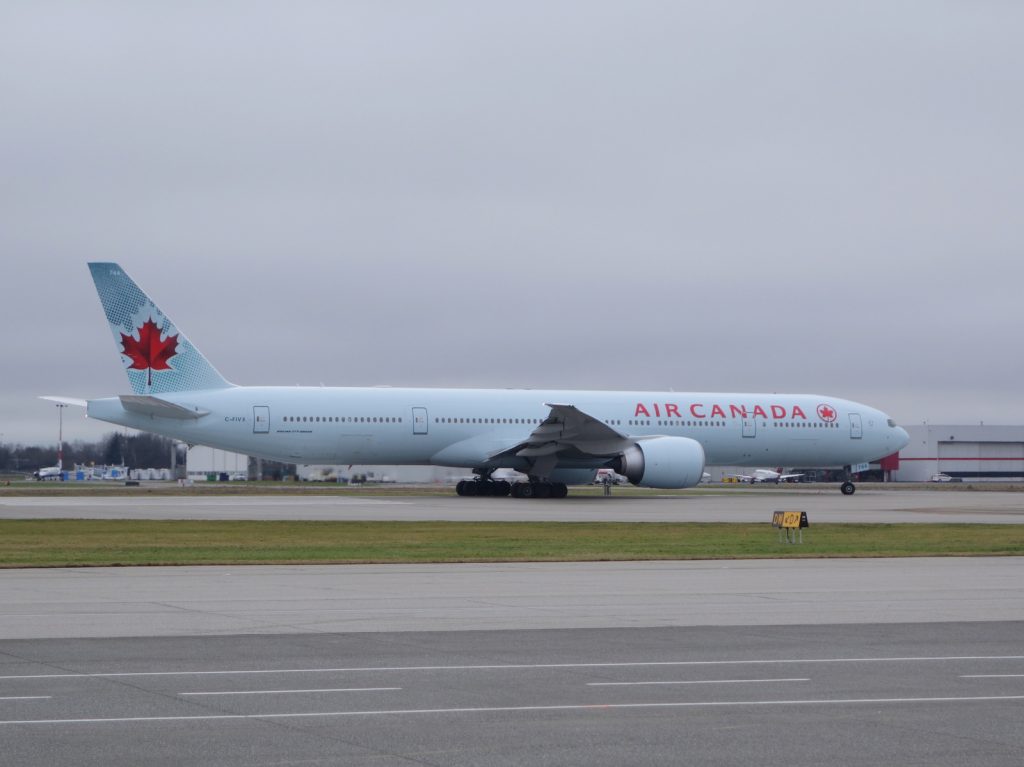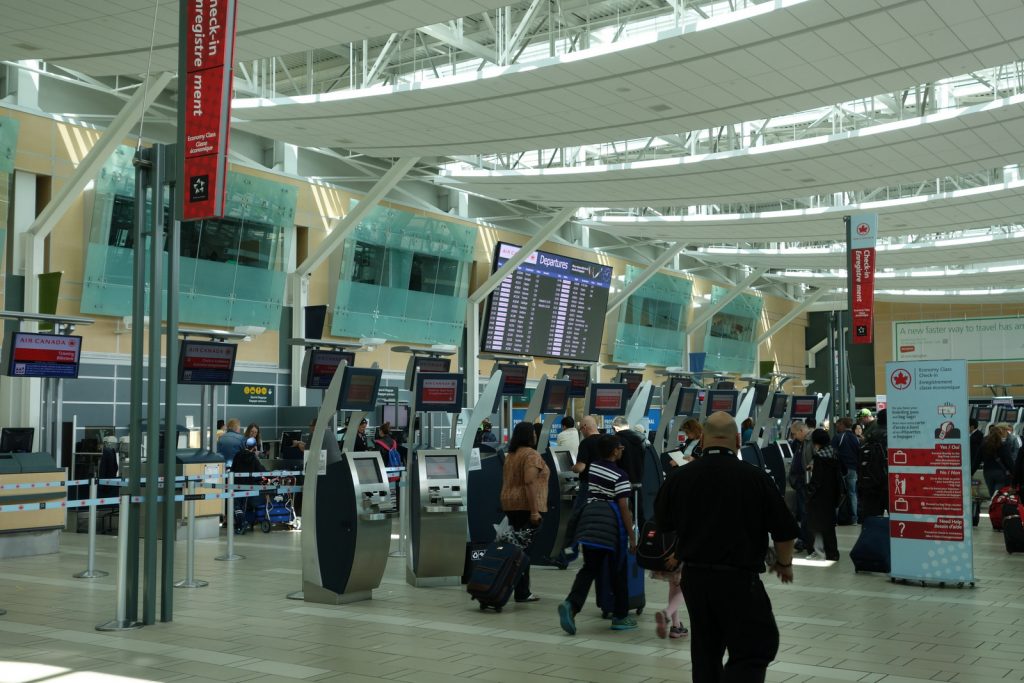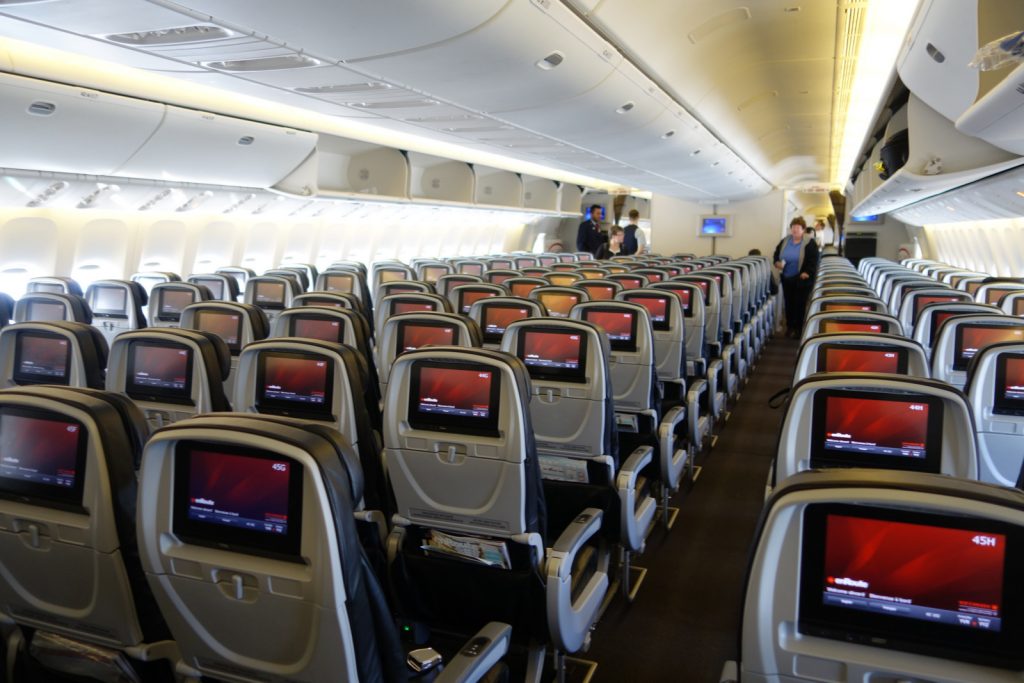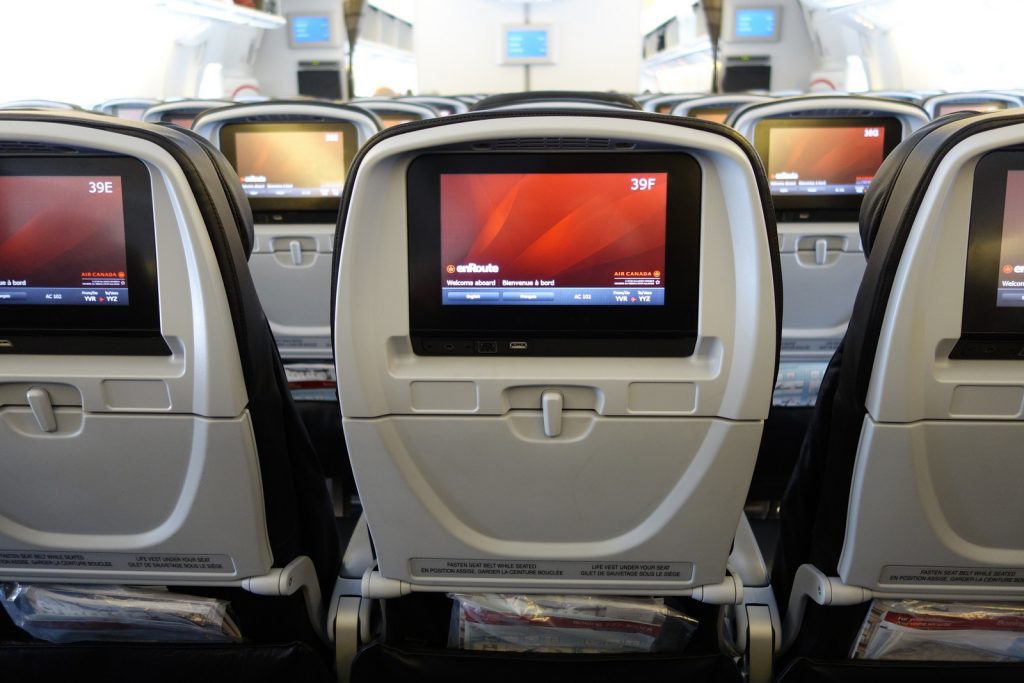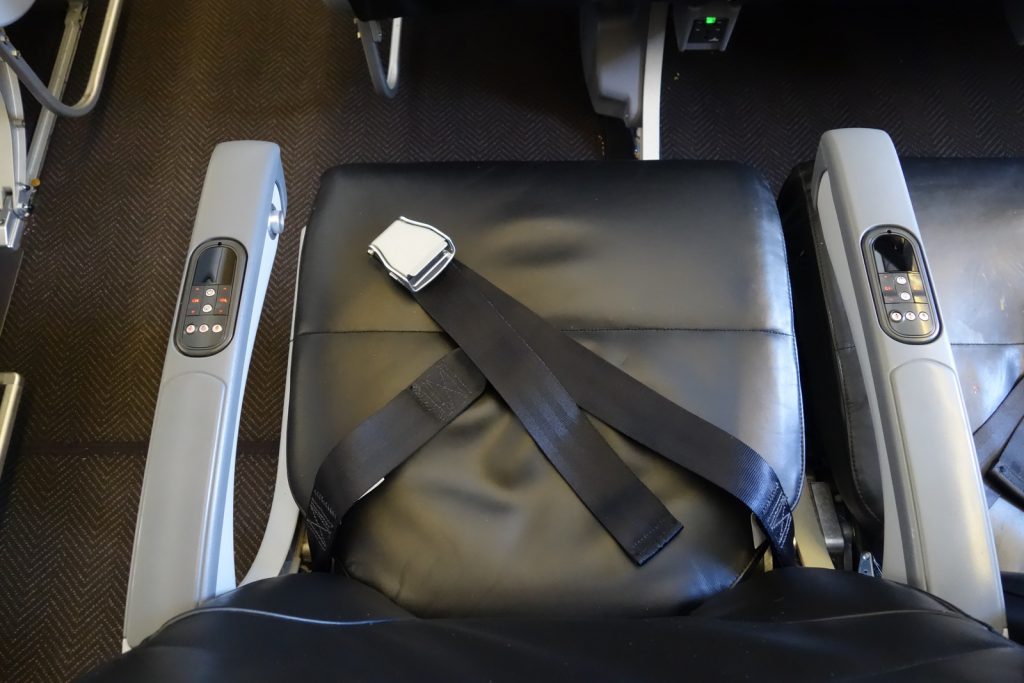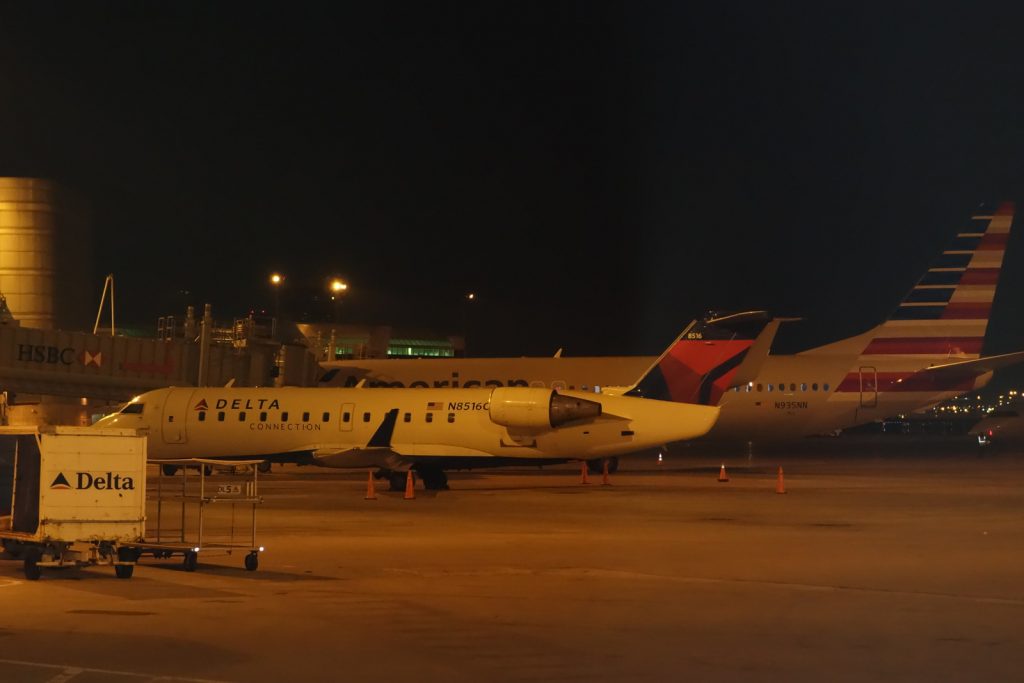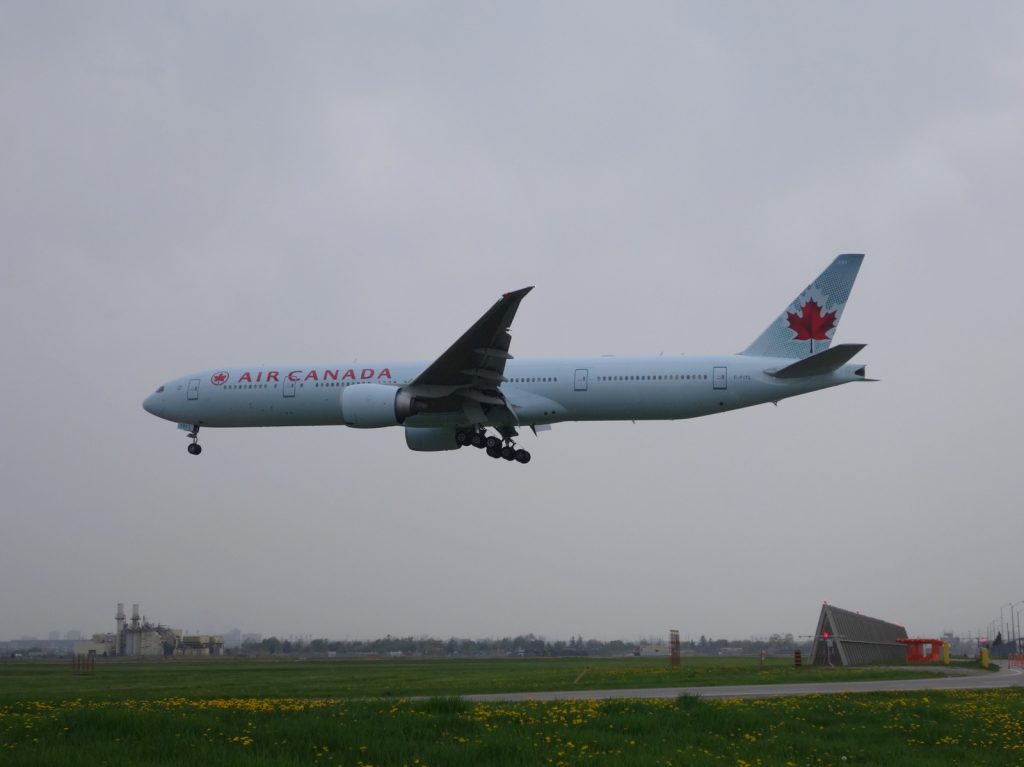Written for Airwaysmag.com
Here I go again…
I’ve been traveling between Vancouver (YVR) and Toronto (YYZ) for decades. I’ve lived and worked in both cities, and family and business trips have taken me back and forth countless times.
I’ve flown on pretty well everything, from a “milk-run” DC-9-30 hopping across the country, to business class in the upper deck of a 747-400. The two airports are roughly 2,100 miles (3,400 km) apart, and the direct flying time is usually around 4 hours eastbound, and 4 ½ hours westbound. That’s enough time to enjoy a good flight and service, but hopefully not so much as to turn a bad flight into an unbearable one.
Like so many of us, I try to use the resources out there on the Interwebthingy to figure out what flight I want to take on what airline, and what seats to try to book. Or to figure out what aircraft types or configurations that I want to avoid. And there happens to be one plane that I’ve stayed away from, until now.
One year ago, Air Canada added the first of five new Boeing 777-300ERs to its fleet. The airline already had eighteen 777s, split between twelve -300ERs, and six -200LRs, and it was no surprise that Air Canada wanted more of the planes to expand its service. There’s been some speculation that these five planes were originally destined for another airline, or perhaps some sort of Air Canada joint-venture that went sour. That might be why the interior configuration of these new planes is very different from the rest of the fleet.
The carrier’s original 777s have two-classes, with business class “pods” in a herringbone configuration up front, and 9-across, 32” pitch, economy seating in the back. In the -300ERs, there’s a total of 349 seats – 42 J Class and 307 Y class. The five new 777-330ERs have three classes. Up front, the 36 business class pods are configured parallel to the aisles. Next is a small premium economy cabin with three rows, 8-across, with a 38 inch seat pitch. Then in the back, seating has increased by 91 to 398, with 10-across, 31 inch pitch, 17 inch wide seats. That’s a total of 458 seats, 109 more than the other -300ERs.
The airline has been using these five planes on high-yield routes. Right now, the planes are flying Montreal to Paris and London, and Vancouver to Toronto, Hong Kong and London. So, to see for myself, and in the name of aircraft research, I decided to book my Vancouver to Toronto flight on one of these high-density 777s. Flight 102 is a daily flight, departing at 2:15PM local time with a 4 hour, 22 minute duration. On the day of my flight, Air Canada tail number 746, C-FNNU, was assigned to AC102.
This plane was the second-newest 777 in the fleet, having been registered in December 2013. I only had a carry-on bag for my short trip to Toronto, so I timed my arrival at YVR’s domestic terminal to get through security and to be at Gate C49 just as boarding started.
Thanks to a perk from one of my credit cards, I was able to pre-board. After walking through business class and premium economy, I entered the first of the plane’s three economy sections. My reaction was “wow, that’s a s***-load of seats.” I made my way to 40H, located in the second economy cabin just behind the wing. More specifically, it was on the aisle in the right-side block of three seats in the 3-4-3 configuration.
Passengers began to stream past me to the rear economy cabin. I was able to take a couple of photos of my seat and the Inflight Entertainment system (IFE) before the cabin was filled up with passengers. As usual, I waited until the seats beside me were filled before I made my “nest”, getting out my noise-canceling headphones, reading materials and snacks.
It was a pretty full flight, but everyone seemed to find overhead bin space for the crazy amount of stuff that passengers travel with these days. The door closed, the plane pushed on time, and we taxied to Runway 26L for a westbound departure. Even though the 777-300ER is a big plane that needs big engines, I’m always amazed at the power of the GE90-115 engines on takeoff. After all, the engines have to be that powerful, so that just one can get the plane airborne and flying in case its partner fails at a critical point on the takeoff run.
But as usual, both of the massive turbofans did their job, and we were quickly airborne, climbing, and into a left 180-degree to set an eastbound course for YYZ. The “we’re at 10,000 feet” chime sounded, and it was time to really have a good look around.
The leather-covered, economy-class slimline seats are made by B/E Aerospace. They’re 17 inches from armrest to armrest, a full 1.5 inches narrower than the economy seats in Air Canada’s other 777s. Seat pitch is down by an inch to 31 inches, and recline is increased by an inch to 6 inches. But those are just statistics. So how was it sitting there?
I don’t have particularly long legs, so I didn’t find the pitch unduly tight. But the upper contour of the backs of the slimline seats seemed to bring the IFE monitor closer to me than in other planes. The narrow width of the seat was noticeable both at my hips and shoulders, and I immediately raised the armrest on the aisle side to get a bit more comfortable. For those who don’t know, there’s often a button or lever under the armrest to release it. Raising it also lets you swivel out of a seat into the aisle, without having to fold the tray table. And fortunately, the headset jack is mounted just below the IFE screen, so I didn’t have to disconnect my ‘phones.
As you can see in the photo, there are buttons on the upper part of the armrest for the IFE, seat light, and flight attendant call. The buttons seemed very sensitive, and the passenger by the window kept turning his light on and off while he slept. Passengers also accidentally hit the FA call button throughout the cabin, which kept the crew hopping for nothing. The airline is aware of the problem. The next day I had the opportunity to chat with an Air Canada executive, who told me that they’re working with B/E Aerospace to adjust the sensitivity of the buttons.
Now that I had enough shoulder-room, I started playing around with the IFE. These 777s have Air Canada’s Enroute V2a system, which is based on the Panasonic eX2 IFE. Although the screens are described as being “enhanced definition” rather than “high definition,” I found the 16 x 9 image to be crisp and clean. The touchscreen and software was very responsive, and a huge improvement from the IFE in Air Canada’s older aircraft.
The selection of movies, television shows and music was extensive, and would have likely kept my attention during a long flight. On its website, Air Canada says that it has over 600 hours of entertainment available, “gate-to-gate” for those passengers using earbud-type headphones. There is also a USB-charging port below each screen, and AC power, with two outlets for every three seats. With only a few hours for this YVR-YYZ flight, the time passed quickly as I watched a movie and a documentary.
Even though the flight was fairly short, I had occasion to use the lavatories. Again, the configuration is different from AC’s other 777s, which have the great loo with a view. Instead of eight lavs serving 307 economy passengers, this plane has six lavs dedicated to the economy cabin of almost 400 passengers. There are another two lavs located between premium economy and business class, plus two in the nose for business class, but I don’t think those are usually available for the economy class passengers. Yes, there were lines.
The cabin crew hustled to serve all of the economy passengers with beverages and “buy on board” food selections. I had snacks with me, so other than my usual multiple glasses of water, I didn’t get anything on this flight. My row partners did, and I tried to see if either of them had any challenges opening the packaging on their sandwiches like I did on my last AC flight. I didn’t hear any cries of frustration, so maybe AC’s flight kitchens have finally put a pull-tab on the plastic package.
The usually-favorable tailwinds helped push us to Toronto, and the 777 landed on YYZ’s Runway 24R just after 9:30 pm (Eastern), with an under four hour flight time. We taxied to Gate D24 at Terminal 1, and everyone jumped up, as usual, as soon as the engines spooled down. Then it got interesting.
The In-Charge Flight Attendant made a P.A. announcement, asking all passengers to “Please stay in your seats. We’ll advise you when you can deplane.” A couple of minutes went by, and then two Peel Regional Police officers walked past me, down the aisle to the rear cabin. They escorted a woman passenger off the plane; she was followed by her male traveling companion, who had a very embarrassed look on his face. I can only guess what went on back there for the passenger to get that kind of a special arrival greeting!
Once we were given the all clear, I made my way off the plane and into the terminal. With just my carry-on, I decided to walk to my nearby hotel instead of waiting for the hotel shuttle bus. I was out of the terminal, into YYZ’s “Link” train, and over to Terminal 3 in minutes. I made my way outside, and across Airport Road to my hotel. Of course, I stopped to get a nice nighttime shot of the T3 ramp.
So, another YVR-YYZ flight went into my logbook. How was it? It was fine. Yes, fine. Good service. Great IFE. And the seats…? Well, I think I’d be looking for a seat on Cathay Pacific if I was flying in economy from YVR to HKG anytime soon. CX’s 777-300’s are still 9-scross in economy, just like the rest of Air Canada’s fleet. At least, like the rest of Air Canada’s fleet…for now. In May, when the airline introduced its first Boeing 787-8, it announced plans to update the 777 fleet to match its 787’s new interiors.
That will be a 3-class configuration, but with new “reverse-herringbone” business class pods, a new premium economy section, and new economy class seats that we can expect to be, you guessed it, 10-across. There will be an additional 51 seats stuffed into the -300ERs, and 31 seats in the -200LRs. Air Canada certainly isn’t the only airline with 10-across in 777 economy. Taking a quick look at Seatguru.com, Air France, American Airlines, Emirates, and Ethiad all have 77W’s with 10-across, just to name a few.
But really, shouldn’t the airlines do what they need to do to be profitable? Is all of the complaining about seat width something that sarcastically falls into #FirstWorldProblems? We’re flying all over the world, quickly, safely, and pretty darned cheaply. Maybe everyone should watch comedian Louis CK before flying: “Everybody on every plane should just constantly be going, ‘Oh my God, wow!’ You’re sitting in a chair, IN THE SKY!”
Oh, I flew home to YVR in an Air Canada 777-200LR. Yup, 9-across. Nice.
Disclosure: Air Canada provided the flight to Airchive at no charge, but the airline neither reviewed nor revised this story.
